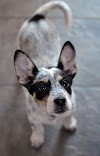The cattle of the Borana tribe in southern Ethiopia were used by Kenyan ranchers to establish the Boran cattle. Southern Ethiopia, northern Kenya, and southwestern Somalia were the three regions in which the breed was discovered. The Boran is a member of the East African Shorthorned Zebu breed and is predominantly bred for its meat.
The Boran is a medium-sized animal with a broad hump over the shoulders, small ears, a short head, and a loose dewlap. They can be either polled or horned. Bulls exhibit variation in height, measuring between 114cm to 147cm, while their average weight ranges from 500kg to 850kg. The average weight of a cow is between 380 to 450 kg. Their fine, short hair and dark pigmentation provide heat tolerance, while their loose, thick, and incredibly supple skin adds an extra layer of insect repellent. Hair can be any color except brindle or pure black.
Boran cattle have evolved critical survival-enhancing adaptive characteristics. Several traits include the capacity to endure sporadic shortages of food and water, the endurance to trek vast distances in pursuit of food and water, and the ability to process subpar food. The Boran's herd instinct makes it simple for them to thrive and navigate the wild country.

Advantages
Docile Nature
Boran cattle are highly regarded because of their docility, which makes them very manageable. Many farmers choose these cattle because of their placid temperament as opposed to some breeds that might be very tense.
Genetic Prowess
The genetic makeup of Boran cattle is one of their unique characteristics. They have evolved a special set of genes throughout many years of evolution, enabling them to flourish in a variety of conditions. Their capacity to adapt is strengthened by this genetic diversity, which guarantees their survival under harsh conditions.
Longevity
Boran cattle are known for having lengthy lifespans. These tough animals can stand the test of time and often live longer than other types of cattle. Over time, this longer lifespan offers farmers a steady and consistent source of income.
Natural Defense
Boran cattle are distinguished by their resilience to pests, ticks, and disease. Farmers can lower their total maintenance costs as a result of their inherent resilience, which reduces the need for excessive medical treatments. For any farmer, this resistance is a precious resource as it guarantees the general health and welfare of the herd.
Graze in Heat
Even in intense heat, Boran cattle are remarkably adaptable. These cattle keep foraging, guaranteeing a steady source of food, even when other breeds falter. This special quality is very helpful to farmers in hot locations where food scarcity is a typical problem.
Water and Feed Tolerance
Boran cattle are excellent in areas where there is a persistent scarcity of grain and water. They demonstrate great tolerance to scarcity by making efficient use of the existing resources. This adaptability guarantees that these cattle can retain good health and productivity even in the face of scarcity.
Disadvantages
Not Suitable for Intensive Farming
Although their versatility is advantageous, intensive agricultural methods are not a good fit for Boran cattle. Their best performance could be hindered in confined areas; they flourish in wide-open, natural settings.
Slow Rate of Growth
The development rate of Boran cattle is comparatively slow in comparison to alternative breeds. Farmers that possess this quality must be patient since raising robust, healthy animals takes time.
Limited Market Demand
When compared to more commercialized breeds, the market demand for Boran cattle is comparatively lower. This limitation makes it hard for farmers to sell their animals, so they have to come up with new ways to market them in order to find buyers.









0 Comments